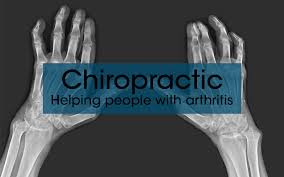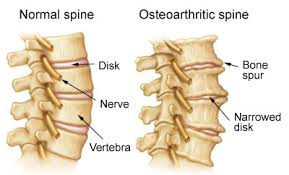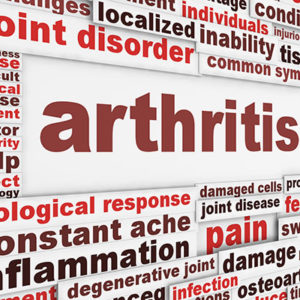 A Systemic Disease
A Systemic Disease
Arthritis is a disease of the whole body (a systemic disease) most dramatically affecting the joints. The word “arthritis” may include more than 100 conditions, many that were formerly known as “rheumatism.”1
Osteoarthritis (OA)
Osteoarthritis or OA, also known as degenerative joint disease, is the most common arthritis of all. Almost everyone over the age of 50 has a touch of it; “It is almost as inevitable … as graying of the hair.”2 In many people there are no symptoms, others may feel pain and some can be incapacitated by it.
OA often results from an unbalanced spine and structural system that create stress on the joints. Your body grows extra bone material in the joints (“lipping” and “spurring”) to help deal with this stress.3 Sometimes the growths compress nerves, causing pain and affecting internal organs.4
Rheumatoid Arthritis (RA)
This is the crippler! RA destroys joints, affects the heart, blood vessels, eyes, skin, muscles and other organs causing fatigue, weight loss and acute pain. It often appears suddenly around ages 30 to 40 and may disappear just as suddenly! No one knows what causes it. Many researchers believe RA is an autoimmune disease that causes the body to attack itself. Multiple scientific articles have documented that vaccinations for flu, MMR, Hep B and others could trigger RA.5
Juvenile Rheumatoid Arthritis
This is similar to adult RA but in over half the cases the disease simply disappears. In less than one-sixth of the cases there is severe disability; organs are affected, with fever, rash and joint pain. Its cause, cure, treatment, how it comes about or why it disappears are all unknown. The rubella vaccine has been discussed as a cause—up to 40% of those vaccinated with rubella suffered joint pain arthralgia, with nearly 2% going on to develop arthritis.6
There is a substantial body of evidence … that immunization may precipitate arthritis in some individuals … tetanus, hepatitis B and smallpox vaccinations.… Rubella vaccine is the only vaccine for which there is convincing evidence to date of a link with arthritis.7
The Orthodox Medical Approach
Medicine offers no cure for arthritis, just symptom treatment including a lifetime of drugs for the pain and inflammation. Heat, hot packs or exercises in warm water are often suggested; if a joint becomes severely deteriorated, then surgery may be considered.
Aspirin, while it may reduce pain, stiffness and inflammation, may require eight to 24 tablets a day and can cause stomach irritation, bleeding and ulcers. Drugs such as Tylenol™, Indocin™, Advil™ and Naprosyn™ can cause kidney damage and hemorrhage of the esophagus, stomach, duodenum and small intestine. Thousands of arthritis sufferers die every year from the gastro-intestinal and other complications of various arthritis drugs.8
Commonly prescribed drugs for arthritis and pain may increase the risk of death from stroke.9
A study of the FDA approved arthritis drug Vioxx revealed that it may have caused between 88,000 and 140,000 serious heart problems in the United States alone resulting in an unknown number of fatal heart attacks since its introduction in 1999 before it was withdrawn in 2005.10
Dr. David Graham, the whistleblower FDA scientist who discovered Vioxx’s damage, cautioned the public to realize that a drug approved by the FDA may not be safe. “The FDA has become an agent of industry. I have been to many, many internal meet- ings and, as soon as a company says it is not going to do something, the FDA backs down,” he said.11
 The Chiropractic Approach
The Chiropractic Approach
For over a century arthritic patients have benefited from chiropractic care.12-17 Chiropractic care has even reversed osteoarthritis—something previously considered impossible.18-20
Chiropractic is not an arthritis treatment; it is a system of healthcare that improves the function of your entire body by removing or releasing blockages from your spine and structural system called subluxations.
Subluxations weaken your nervous and immune systems, thus weakening your entire body. This can set the stage for sicknesses and diseases of all kinds—arthritis included.
Conclusion
Too many doctors … spend wasted time naming the patient’s rheumatic diseases…. More time should be spent on conducting chiropractic analysis to identify subluxations … and carefully research a patient’s history to uncover personal habits that may have contributed to the development of the condition.21
Chiropractic helps turn on your “inner healer,” your inner healing ability. When you are free of subluxations your body functions better. That is why anyone with arthritis needs a chiropractic checkup to locate and remove their subluxations.
As a general rule it is always wisest to search out the most natural, conservative methods before submitting to more invasive (drug and medical) care. The body has a wisdom that far exceeds our own. It can cure diseases that have no known cure—even arthritis.
For an appointment at Performance Chiropractic, please call us at (661) 942-5000.
References
- Lawrence R et al. Estimates of the prevalence of arthritis and other rheu- matic conditions in the US. Part II. Arthritis Rheum. 2008;58(1):26-35.
2. Robbins SL. Pathologic Basis of Disease. Phila: W. B. Saunders Co., 1974.
3. www.niams.nih.gov/hi/topics/arthritis/oahandout.htm. July 2002.
4. Giles LG. The pathophysiology of zygapophyseal joints. In Haldeman S. (Ed.). Principles and Practice of Chiropractic. Norwalk, CT: Appleton & Lange, 1992:203-205.
5. Basra G et al. Rheumatoid arthritis and swine influenza vaccine: a case report. Case Reports in Rheum. Vol. 2012 (2012), Article ID 785028: 3 pages.
6. Symmons DP, Chakravarty K. Can immunisation trigger rheumatoid arthritis? Ann Rheum Dis. 1993;52(12):843–844.
7. Schattner A. Consequence or coincidence? The occurrence, pathogenesis and significance of autoimmune manifestations after viral vaccines. Vaccine. 2005;23(30):3876-3886.
8. Simard JF et al. Mortality rates in patients with rheumatoid arthritis treated with tumor necrosis factor inhibitors: drug-specific comparisons in the Swedish Biologics Register. Arthritis Rheum. 2012;64(11):3502-3510.
9. Schmidt M et al. Preadmission use of nonaspirin NSAIDs and 30-day stroke mortality. Neurology. 2014;83(22):2013-2022.
10. Graham DJ et al. Lancet. Published online January 25 (2005).
11. www.independent.co.uk/news/business/the-interview-david-graham-fda-whistleblower-drug-tsar-who-took-on-the-system-1530328.html. 2/11/05.
12. Patel D, Russell D. Improvement in mobility, emotional wellbeing & quality of life in an older adult following subluxation based chiropractic care: a case report. AVSR. September 17, 2015;157-162.
13. Shaikewitz M. A demographic and physical characterization of cervical spine curvature and degeneration. AVSR. Volume 1(2):1-8.
14. Valcarcel J, Varnum C, Floyd R, Alcantara J. Resolution of shoulder pain in a 73-year-old female following chiropractic care to reduce vertebral subluxations. AVSR. February 19, 2015:14-22.
15. Pero J, Jockers D. Improvement in cervical curvature and health outcomes in a patient with rheumatoid arthritis undergoing chiropractic care to reduce vertebral subluxation. AVSR. July 26, 2012:77-81.
16. Basso E et al. Resolution of juvenile idiopathic arthritis & improved immune function in a 16-year-old undergoing chiropractic care: a case study. J Pediatric, Maternal & Family Health – Chiropractic. 2014;4:65-69.
17. Knowles DM, Knowles R, Burnier B. Reorganization of the cervical curve & improved quality of life following Network Spinal Analysis care: a case study. AVSR. December 7, 2015:217-225.
18. Nelson W. Rheumatoid arthritis, a case report. Chiro Tech. 1990;2:17-19.
19. Fiechtner F, Brodeur L. Manual and manipulation techniques for rheumatic disease. Rheum Dis Clinic of North America. 2000;26(1):83-96,ix.
20. Ressel OJ. Disc regeneration: reversibility is possible in spinal osteoarthritis. Int’l. Review of Chiropractic. March/April 1989:39-61.
21. Berkson DL. Osteoarthritis, chiropractic, and nutrition: osteoarthritis considered as a natural part of a three stage subluxation complex; its reversibility; its relevance and treatability by chiropractic and nutritional correlates. Medical Hypotheses. 1991;36(4):356-367.